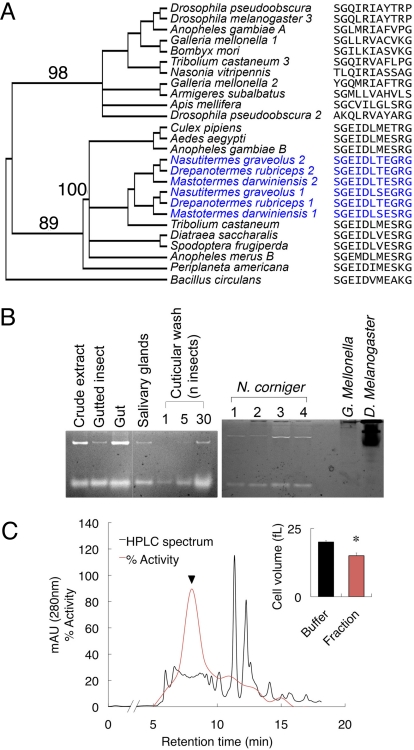Fig. 1.
Termites exhibit an unusual β(1,3)-glucanase activity. (A) Distance tree of insect GNBPs rooted with B. circulans β(1,3)-glucanase. Numbers depict bootstrap values for basal lineages. Glucanase motif sequences are adjacent to species name. Termite species appear in blue. Numbers following species name indicate GNBP-1, -2, etc. (B) β(1,3)-Glucanase activity in termite tissues and cuticular washes, assayed on Carboxymethyl Curdlan Remazol Brilliant Blue gels (lanes: 1, soldier; 2, large worker; 3, large worker; 4, 10 workers; 5–7, 1, 5, and 30 large workers, respectively) (Left). Comparison of activity in extracts from termites (lanes: 1, Nasutitermes corniger collected from Florida; 2–4, N. corniger collected from different colonies in Panama), Drosophila melanogaster and Galleria mellonella (Right). (C) Activity profile of fractionated termites separated by HPLC. (Inset) Cytotoxic effect of the peak active fraction (marked with an arrowhead) from termites on Metarhizium anisopliae conidia measured by flow cytometry as the effect on cell volume in femtoliters (*, P < 0.05 vs. buffer).

